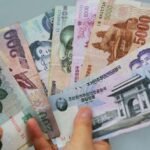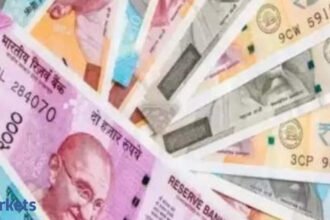KUALA LUMPUR: The ringgit is seen moving towards the 4.00 to 4.15 level against the greenback by end-2025, after registering a six per cent gain against the US dollar year-to-date, making it the top-performing Asian currency and affirming its steady trajectory.
The tailwinds pushing the ringgit’s performance are both structural and cyclical – Malaysia’s domestic economy has proven resilient, its policy signals remain stable, and its export base is broad enough to benefit from the regional trade upswing without being hostage to any single commodity.
Adding to that, the narrowing of interest rate differentials between Malaysia and the United States is seen as a key driver of the ringgit.
SPI Asset Management managing partner Stephen Innes said the interest-rate gap with the US has narrowed, exporter conversions are picking up, and the US Federal Reserve’s (Fed) own tightening fatigue is softening the dollar’s grip.
“The psychological line sits near 4.00, and if global conditions remain benign amid softer US yields, steady oil, and no domestic policy stumbles, the ringgit could grind toward that mark in the coming months. But it is unlikely to sprint. This is a slow-turning story, not a momentum trade.
“The bigger takeaway is symbolic: the ringgit is no longer the easy short in the Asia basket. After years of being the region’s proxy for vulnerability, it is starting to look like a measure of relative stability – and in a world where investors are hunting for islands of calm, that is a narrative shift that matters,” he told Bernama.
IPPFA Sdn Bhd director of investment strategy and country economist Mohd Sedek Jantan emphasised that should ongoing reforms advance, the ringgit could strengthen further toward 4.05 by the end of 2026.
“The ringgit’s outperformance reflects underlying resilience, but resilience must now be translated into sustained investor conviction,” he said.
Mohd Sedek opined that the priority from now on is consistency in policy execution, credible fiscal consolidation, and deepening market depth to ensure that capital does not simply pass through Malaysia, but remains anchored and productive within the domestic economy.
The ringgit opened at 4.1865/1985 this morning against the US dollar after closing 0.14 per cent higher at 4.1890/1925 yesterday.
He explained that the currency’s climb toward the 4.18 level has been supported by a softer US dollar following the Fed’s second consecutive 25-basis-point rate cut to 3.75-4.00 per cent, alongside Bank Negara Malaysia’s decision to maintain a steady policy rate while regional central banks eased.
“This has preserved a favourable yield differential and reinforced confidence in Malaysia’s inflation outlook and financial stability.
“At the same time, exports in palm oil and electronics, as well as domestic demand — supported by civil service wage adjustments and infrastructure expenditure — have helped offset weaker external momentum, particularly as China’s National Bureau of Statistics Composite Purchasing Managers Index stagnated at 50.0 in October,” he said.
Despite the ringgit’s strength, both Innes and Mohd Sedek cautioned that equity outflows remain heavy and those flows have to find a home.
“Increasingly, they are being parked in domestic bonds, short-tenor deposits, and even in defensive regional carry trades where the ringgit is part of a blended ASEAN long. There is also quiet interest from real-money investors rotating toward undervalued currencies with improving fundamentals – and Malaysia now checks that box,” Innes said.
Mohd Sedek noted that foreign investors have continued to pare back exposure to Malaysian assets, with RM4.39 billion in net equity outflows year-to-date – the steepest in recent years.
“This trend is not unique to Malaysia. Across eight tracked Asian markets, year-to-date foreign portfolio flows stand at a net outflow of US$21.95 billion, reflecting a broader risk-off shift,” he said.
He added that this repositioning has recently extended into the bond market, with foreign net selling of Malaysian government securities, affirming that foreign investors are reducing their holdings from earlier peaks.
“This underscores that global investors are not simply rotating within Malaysia from equities to bonds, but reassessing emerging market risks more broadly in the face of slower global trade, weaker Chinese demand, and heightened uncertainty surrounding US industrial and trade policy.
“Against this backdrop, where are foreign investors positioning within Malaysia? Rather than exiting entirely, many are shifting toward more defensive and tactical allocations, including shorter-tenor bond exposures, sectors linked to domestic consumption and services, and portfolio structures that incorporate currency hedging,” he said.
Mohd Sedek explained that these strategies allow investors to stay engaged while managing volatility and policy uncertainty.
“This is not a withdrawal from Malaysia as an investment destination, but a recalibration of time horizon and risk appetite,” he said.
Looking ahead to year-end, analysts said the ringgit retains room for gradual appreciation if global financial conditions stabilise and domestic macro policies continue to provide clarity and consistency.
However, sustainability will depend on delivering momentum in supply chain diversification, green technology investment, and digital industrial upgrading.
“Should these reforms advance, the ringgit could strengthen further toward 4.05 by end-2026,” said Mohd Sedek. – Bernama


















